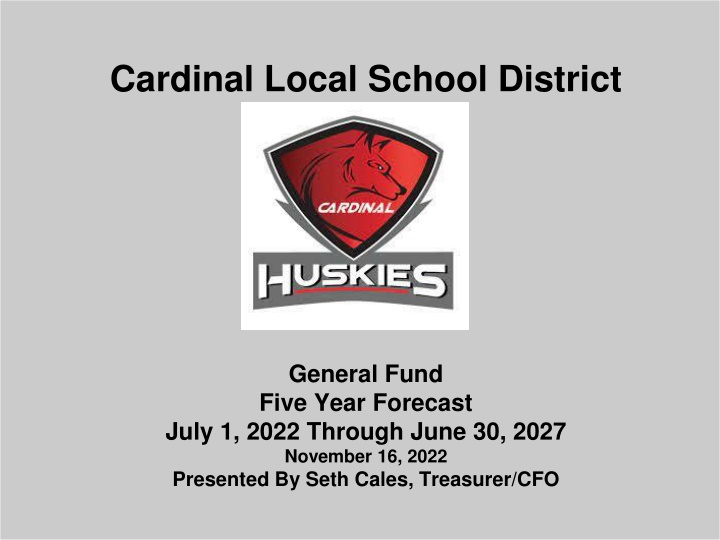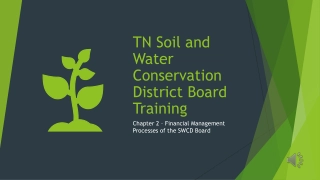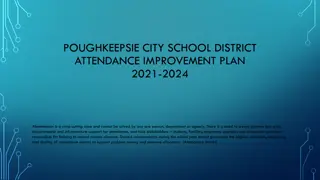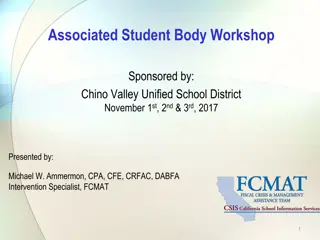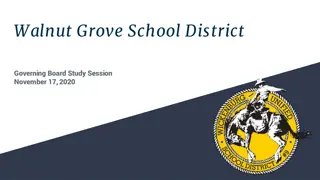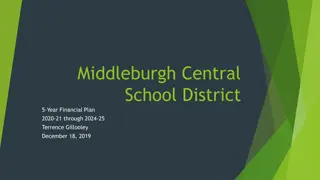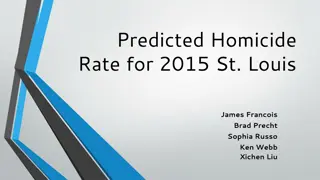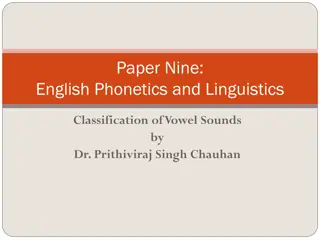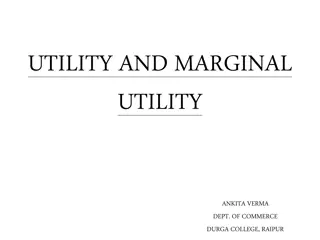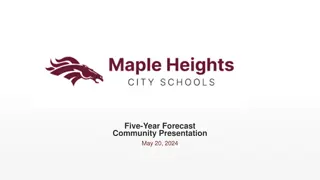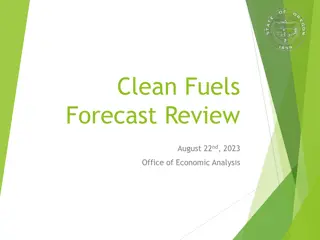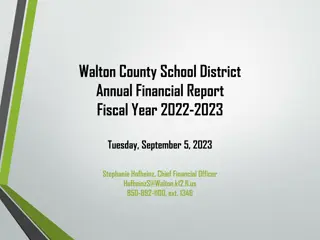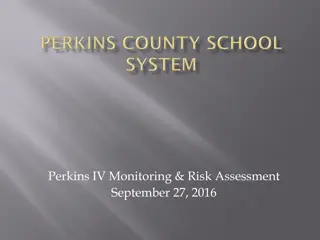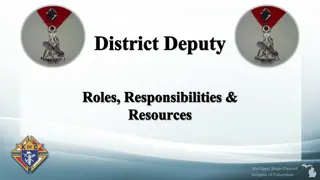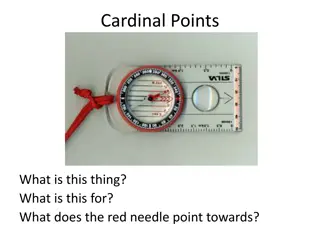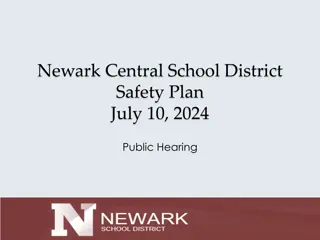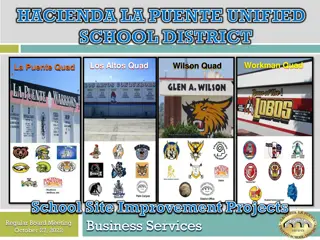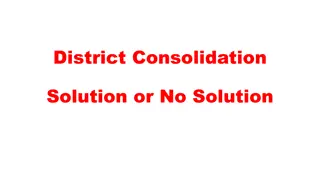Cardinal Local School District Financial Forecast
This document presents the Cardinal Local School District's General Fund Five-Year Forecast from July 1, 2022, to June 30, 2027. It outlines the district's revenue, expenditures, and key line items, serving as a crucial tool for long-range financial planning and decision-making. The forecast supports proactive management by identifying potential challenges and ensuring financial stability.
Uploaded on Mar 09, 2025 | 0 Views
Download Presentation

Please find below an Image/Link to download the presentation.
The content on the website is provided AS IS for your information and personal use only. It may not be sold, licensed, or shared on other websites without obtaining consent from the author.If you encounter any issues during the download, it is possible that the publisher has removed the file from their server.
You are allowed to download the files provided on this website for personal or commercial use, subject to the condition that they are used lawfully. All files are the property of their respective owners.
The content on the website is provided AS IS for your information and personal use only. It may not be sold, licensed, or shared on other websites without obtaining consent from the author.
E N D
Presentation Transcript
Cardinal Local School District General Fund Five Year Forecast July 1, 2022 Through June 30, 2027 November 16, 2022 Presented By Seth Cales, Treasurer/CFO
O.R.C. and O.A.C. Requirements O.R.C. 5705.391 and O.A.C. 3301-92-04 Require a Board of Education to submit a five-year projection of operational revenues and expenditures along with assumptions to the Ohio Department of Education prior to November 30th and an update by May 31st of each fiscal year Required funds to be included in the five-year forecast are: General Funds (001) Any special cost center associated with general fund money Emergency levy funds (016) Any debt service (002) activity that would otherwise have gone to the general fund
Purposes and Objectives of the Forecast To engage the Board of Education and the community in long range planning and discussions of financial issues facing the school district. To serve as a basis for determining the school district s ability to sign the certificate required by O.R.C. 5705.412, commonly known as the 412 certificate . To provide a method for the Ohio Department of Education and Auditor of State to identify school districts with potential financial problems.
Before we get to the numbers A financial forecast is somewhat like a painting of the future based upon a snapshot of today. The five-year forecast is viewed as a key management tool and should be updated periodically. In a financial forecast, the numbers only tell a small part of the story. For the numbers to be meaningful, one must review and consider the Notes and Assumptions before drawing conclusions or using the data as a basis for other calculations. The five-year forecast encourages district management teams to examine future years projections and identify when challenges will arise. This helps district management to be proactive in meeting those challenges.
Key Line Items The five-year forecast is divided into two sections: revenue and expenditures. A district s revenue is made up of two main sources, local and state funding. The expenditures are mainly salary and wages, benefits, purchased services, and supplies and materials.
Revenue Vs. Expenditure General Fund Revenue, Expenditures & Cash Balance $16 Millions $14 $12 $10 $8 $6 $4 $2 $- Act. FY20 Act. FY21 Act. FY22 Expenditures FY23 FY24 FY25 FY26 FY27 Revenue Ending Bal. 60 Day Cash Ratio Ending cash balance is positive through the forecast. We are thankful to the residents for passing the levy on November 8th.
Est. General Fund Revenue Sources FY23 GENERAL FUND ESTIMATED REVENUES FY23 $14,610,729 Other State 7.7% State Sources 26.4% Local Sources 73.6% State Foundation 18.7% Other Local 7.7% Real Estate Taxes 59.0% Tang. Tax 6.9% State revenues are about 26.4% of our revenues. State revenue originally guaranteed FY19 Funding level but HB166 made cuts for FY20 and FY21. HB110 funding projections will remain flat due to the uncertainty future state budgets will have on this formula.
Local vs. State Funding General Fund Local Revenue vs State Revenue $12 Millions $10 $8 $6 $4 $2 $- Act. FY20 Act. FY21 Act. FY22 FY23 FY24 FY25 FY26 FY27 Local Revenue State Revenue HB110 restores funding to FY21 levels when considering direct payments HB110 did not stop Phase Out of TPP loss reimbursements causing overall Dip in state revenue beyond FY23 unless a future state budget stops the TPP phase out The dip in state revenue in FY23 is due to levy expiration.
Operating Revenue-The Cuts HB110 Fair School Funding Plan made many changes to state funding payments and expenses. Funds students where educated. This will generally Lower Line 1.06, may increase Line 1.035 & 1.04 while lowering costs on line 3.03 for direct payments for OE, Community & STEM schools and scholarships. School Funding Plan has us frozen on a guarantee in FY22 and FY23 not likely to change. Total revenue is estimated to grow by less than 1% annually over the next 5 years while expense are estimated to grow by 3.5% a year. State TPP Reimbursement cuts continued in HB110 per SB 208 and will likely be gone completely by 2025 or 2026 built into forecast model.
Operating Revenue-The Cuts HB66 in 2005 restructured public utility TPP taxes. We were to be guaranteed reimbursement for losses. In FY11 we were being paid $2,374,177 from the state. Then the phase outs and cuts began to erode our payment. FY22 it was $554,151 and will be gone completely by FY24 or FY25. If we cumulatively add the impact of each years cut through FY21 we will have lost roughly $12.28 Million in revenue the state had originally promised. Not a lot of positive news about revenue growth.
Est. General Fund Expenditures FY23 GENERAL FUND OPERATING EXPENDITURES EST. FY23 $12,418,137 Wages 49.6% Other 1.6% Capital 0.2% Benefits 24.9% Materials 2.3% Services 20.7% Wages and benefits approximately 74.5%. Capital outlay has been reduced or moved to the PI Fund.
Expenditures No base wage increases projected FY23-FY27 Health insurance increases 3.85% FY21, 4.0% for FY22 and 7.4% FY23, and 6% FY24-FY27. Two premium holidays in FY21 and FY22. We will only have 1 premium holiday for FY23 and will model 1 premium holiday for FY24 to FY27. Other expenses based on trends and generally flat. Expenses are growing faster than revenue.
General Fund Expenditures By Object FY20 through Est. FY 27 General Fund Expenditures Actual FY20 Through Projected FY27 $16 Millions $14 $12 Other Expenses Capital $10 Material Services $8 Benefits Wages $6 $4 $2 $0 Act. FY20 Act. FY21 Act. FY22 FY23 FY24 FY25 FY26 FY27 Costs continue to rise at about national inflation rates.
True Day Cash Ratio Ending Unencumbered Cash Balance in True Cash Days 180 165 165 162 154 160 145 140 120 102 100 80 60 40 24 13 20 0 Act. FY20 Act. FY21 Act. FY22 FY23 FY24 FY25 FY26 FY27 GFOA recommends 60 days TDC but 30 days in minimum.
Revenues, Expenditures and Ending Cash Balance Including Levy Renewal 15.02 General Fund Revenues vs Expenditures FY20 through FY27 $16 Millions $14 $12 $10 $8 $6 $4 $2 $0 Act. FY20 Act. FY21 Act. FY22 FY23 FY24 FY25 FY26 FY27 Revenue Expenditures Ending Cash Balances 60 Day Cash Ratio The above shows our revenues, expenses and ending unencumbered cash balances.
Items to Consider About Our Finances SB208 Phases Out our TPP reimbursements beginning FY18 until gone in FY24/FY25 $12.28 Million cumulative loss so far. State further cut foundation funding for FY20 & FY21 New state budget HB110 not providing substantial net new money. Future funding is uncertain still for FY24-27 as Fair School Funding Plan not funded beyond FY23 Other proposals like College Credit Plus, excess costs and tuition are expected to increase our costs going forward. State budgets continue to shift more responsibility over to our local taxpayers while they also allow other school choice costs to rise. ESSER II $1.52M and ESSER III $3.4M are the only major new money we can expect through September 2024. We need to use it strategically to help Gen. Fund., expand curriculum and educational opportunities, and increase cash balance.
What Now Use ESSER II & III Strategically to prevent learning loss and increase cash balance through strategic use of funds. College credit plus and tuition costs are expected to increase our costs going forward and will be continued in new state budget. Local and state revenues not keeping pace with expenses. Our revenue is flat FY22-27 even with levy renewal and expense are growing on average 3.5% a year.
Thank You for Listening Questions and Answers
